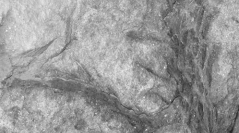

 Comptes Rendus Palevol
6 (6-7) - Pages 403-411
Comptes Rendus Palevol
6 (6-7) - Pages 403-411The present study focuses on the diversity and paleovegetational significance of the floristic record of the Late Permian continental Alcotas Formation, in five sections of the southeastern Iberian Ranges, central Spain. This unit, of Upper Tatarian or Lower Lopingian (Upper Permian) age, can be subdivided into three parts, represented by sediments originating from sandy and gravely braided, high-sinuosity, and sandy-braided fluvial systems developed in wide floodplains, from bottom to top respectively. Five zones, referred to as A to D, have been differentiated after correlation of the four studied sections, based on sedimentary and stratigraphical criteria. The study of megaremains recovered from the levels placed within each zone indicates changes in both biodiversity and population density. The oldest assemblage comprises impressions of leafy shoots and caules of gymnosperms. The poor preservation of some megaremains hinders their classification. A significant increase in diversity and population density is evident in the next and younger association, which shows reproductive structures and remains of leaves, trunks, and indeterminate caules of sphenopsids, cordaitales, and conifers. The next assemblage is dominated by conifers. The specimens collected mainly correspond to silicified trunk fragments, highly carbonized. A total absence of fossilised plant and trunk remains is the main characteristic of the upper part of the Alcotas Fm. The occurrence of these fossil floras is significant, due to the paucity of the fossil record of megafloras of identical or similar geological age, which has made it difficult to acquire knowledge on the development of flora and vegetation in the Upper Permian of Europe. The evolution of the biodiversity of the megafloras allows us to infer paleoecological changes for a time interval close to the end-Guadalupian biotic crisis.
End-Guadalupian, plant remains, Iberian Ranges, Permian, flora